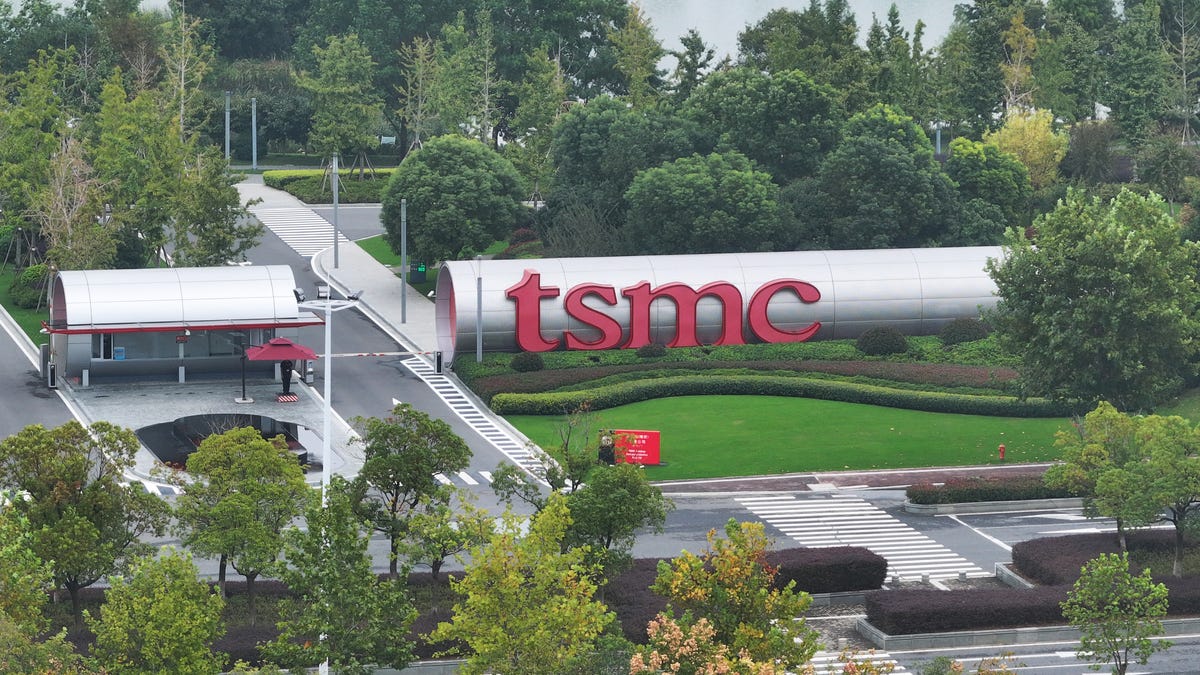Biden’s Strategic Move: Shielding U.S. Chip Technology from China
In a decisive and bold initiative, President Joe Biden is taking significant steps to prevent China from accessing advanced semiconductor technology from industry giants like TSMC (Taiwan Semiconductor Manufacturing Company) and Samsung. This strategic move not only aims to bolster national security but also seeks to reshape the global tech landscape, potentially escalating tensions in U.S.-China relations.
The Importance of Semiconductor Technology
Semiconductors, often referred to as chips, are the backbone of modern technology. They are crucial components in a myriad of devices, ranging from smartphones and laptops to advanced military systems and artificial intelligence applications. As the global economy increasingly relies on digital technology, the demand for cutting-edge semiconductor technology has skyrocketed.
China has made substantial investments in its semiconductor industry, aiming to become self-sufficient and a significant player in the global market. The U.S., recognizing the importance of maintaining its technological edge, has initiated measures to thwart China’s progress in this critical sector.
Biden’s Strategic Move Explained
President Biden’s decision to shield U.S. chip technology stems from the growing concerns about national security and the potential military applications of advanced semiconductors. By restricting access to this technology for Chinese firms, the administration aims to prevent the potential use of these advancements in areas that could threaten U.S. interests.
Some key aspects of Biden’s strategy include:
- Export Controls: The U.S. government is implementing stricter export controls on advanced semiconductor technology. This means that companies like TSMC and Samsung will face limitations on the technology they can share or sell to Chinese firms.
- Investment Restrictions: The Biden administration is also considering measures to restrict investments in Chinese semiconductor firms. This could involve curbing U.S. investments in companies that are seen as key players in China’s semiconductor ambitions.
- International Collaboration: The U.S. is actively working with allies to create a united front against China’s semiconductor advancements. Collaborative efforts with countries like Japan and South Korea aim to establish a coherent strategy for managing technology exports.
The Potential Impact on Global Tech Landscape
Biden’s strategic move is poised to significantly reshape the global semiconductor industry. By limiting China’s access to advanced technology, the U.S. is not only protecting its own interests but also altering the competitive dynamics within the industry. Here are several potential outcomes:
- Increased Competition: With China facing restrictions, other countries may seize the opportunity to fill the gap. Nations like India and Vietnam are ramping up their semiconductor manufacturing capabilities, potentially increasing competition in the global marketplace.
- Supply Chain Realignment: Companies may reconsider their supply chains. Firms that previously relied on Chinese manufacturers may look to diversify their partnerships, leading to a more fragmented but resilient global supply chain.
- Innovation Surge: By protecting their technology, U.S. companies may invest more heavily in research and development (R&D), spurring innovation in the semiconductor sector. This could lead to breakthroughs that enhance the performance and efficiency of chips.
Challenges and Risks
While Biden’s strategic move aims to safeguard U.S. interests, it is not without its challenges and risks. Here are some critical considerations:
- Tension with China: This initiative is likely to escalate tensions between the U.S. and China. In response, China may retaliate by imposing its own restrictions on U.S. technology companies, further straining relations.
- Global Market Reactions: The semiconductor market is highly interconnected. Restrictions imposed by the U.S. could lead to volatility in global markets, impacting stock prices and investment flows.
- Dependence on Allies: The success of this strategy heavily relies on the cooperation of U.S. allies. If key partners do not align with these restrictions, it could undermine the effectiveness of the initiative.
Future Outlook: A New Era of Semiconductor Competition
Looking ahead, Biden’s strategic move may usher in a new era of competition in the semiconductor industry. As countries vie for technological supremacy, we could witness a paradigm shift in how nations approach technology and trade. Here are some potential scenarios:
- Technological Decoupling: The world may see a gradual decoupling of technological ecosystems, where countries develop their own semiconductor technologies independently. This could lead to a bifurcation in technology standards.
- Heightened Investment in R&D: With increased competition, nations may boost their investments in semiconductor research and development. This could accelerate advancements in technology but may also lead to a race that puts pressure on resources.
- Emergence of New Players: As traditional powerhouses like the U.S. and China compete, new players could emerge. Countries like India and Brazil might capitalize on this situation to strengthen their technological foundations and become significant contributors to the semiconductor market.
Conclusion
Biden’s strategic move to shield U.S. chip technology from China is a multifaceted initiative that reflects the growing importance of semiconductors in national security and global economics. As the U.S. seeks to maintain its technological edge, the implications of this decision will resonate throughout the global tech landscape. The potential for increased competition, innovation, and even tensions with China presents both opportunities and challenges. As we move forward, it will be crucial for policymakers, industry leaders, and nations to navigate this complex terrain carefully, ensuring that advancements in technology benefit all while safeguarding national interests.
See more Future Tech Daily

